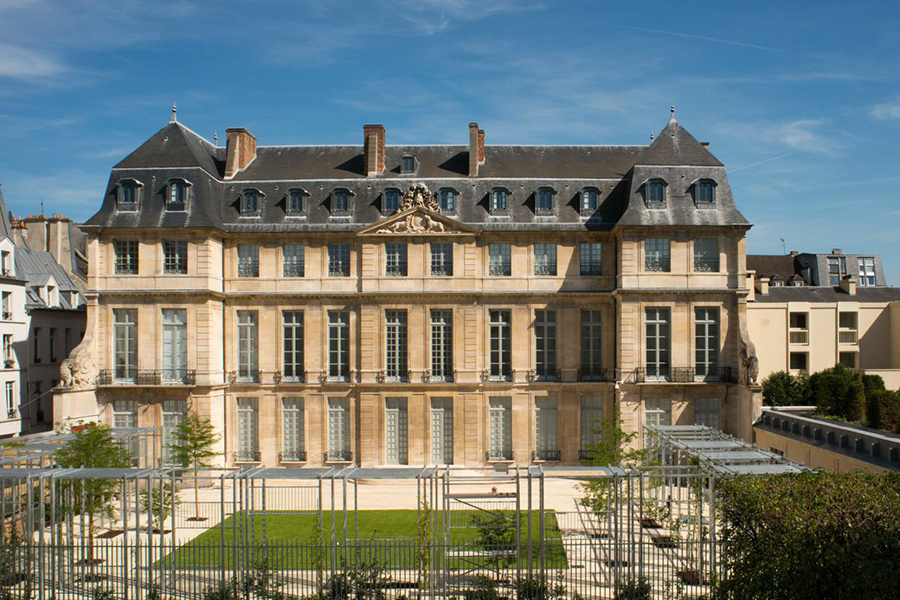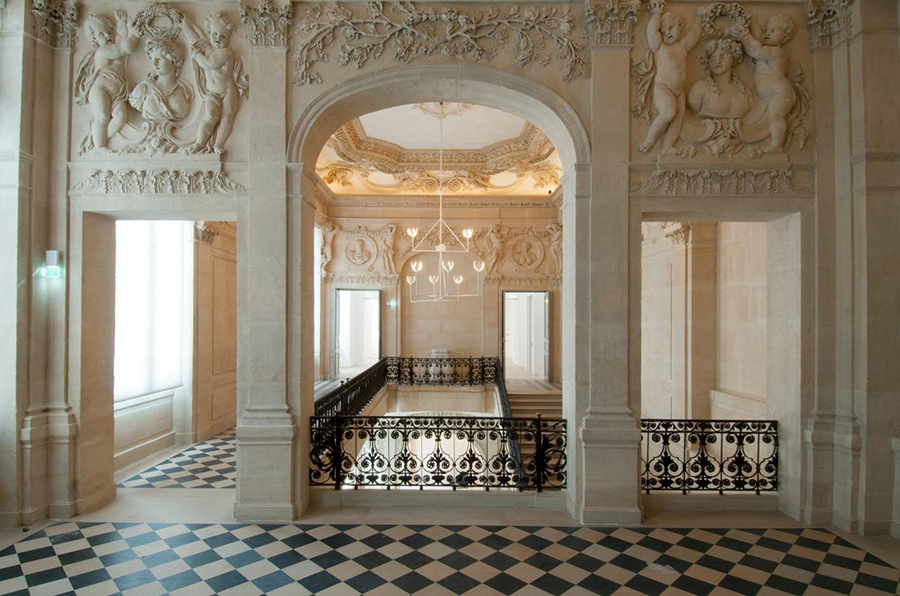A setting: the Hôtel Salé
In July 1976, in agreement with the heirs, Michel Guy confirmed that a national Picasso museum would be created to gather the works handed over to the French State as payment of estate taxes. Michel Guy, a modern art lover with a thorough knowledge of the art world and himself a collector, became the tireless instigator of the addition of works to the public collections through the new law, which was particularly well suited to the case of the Picasso estate. The site chosen for the museum was the Hôtel Salé, whose monumental entrance, opening onto a large courtyard, overlooks the Rue de Thorigny in the Marais district. This building, declared a historical monument in 1968 and one of the few listed buildings of its size, belongs to the City of Paris.
Michel Guy launched a competition for ideas among a restricted number of architects and selected the project submitted by Roland Simounet, which involved gutting the building almost entirely and leaving only the monumental indoor staircase, thus freeing up 4,500 square meters of floor space.
After some initial reluctance, the artist's widow Jacqueline and his descendants finally agreed to have the Picasso museum set up in the Hôtel Salé, although they were concerned that it might be too small. In a television interview, Michel Guy announced that it would open in 1976; in 1983, the former Secretary of State bemoaned the "administrative sluggishness, which I would rather refer to as the Franco-French negotiations" that kept on delaying the project.[1] In fact, after a long sequence of difficult negotiations, the terms of the contract granted to the State by the City of Paris (which in the meantime had become a full-fledged local authority with the first election of a mayor in 1977) were not finalized until 1979. The agreement stipulated that the City would have to fund half of the cost of restoring the shell of the building, whereas the State would cover all the work done in the interior. It took almost ten years to complete the construction project, and the museum finally opened on September 23, 1985.
Dominique Bozo (1935-1993), the director of the Musée national d'art moderne at the time, was the person Michel Guy entrusted to select the pieces for the collection that the State would receive as a dation, as well as to install the ensemble in the new museum, in collaboration with Jean Leymarie (1919-2006), the former director of the Musée national d'art moderne and the organizer of the 1966 tribute. The working group assisting on the task included the curator Michèle Richet, Roland Penrose, Pierre Daix, and Maurice Besset. "Michel Guy set the ball rolling at the beginning of 1975 when he made a threefold decision: to create a Picasso museum; to install it in the Hôtel Salé, in the Marais; and, in agreement with Maurice Aicardi, to appoint Dominique Bozo—knowledgeable, sensitive, and diplomatic—as the project leader for the future museum."[2]






 Summary
Summary